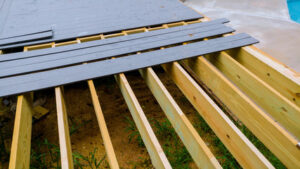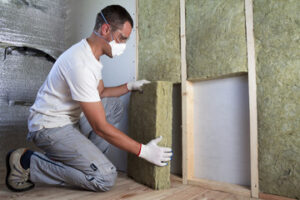Masonry Restoration can transform deteriorating brick and stone structures into revitalized architectural highlights. It can also protect against further damage and keep your commercial property safe to occupy.
A specialized masonry contractor will do a better job than your average general construction company because that is all they do. They know the materials and techniques better.

Masonry structures are designed to stand the test of time, but over time they can deteriorate due to exposure to the elements. Fortunately, masonry restoration can turn aging or damaged structures into revitalized architectural highlights.
There are many benefits that come with professional masonry restoration, but some of the most important are structural repairs. Masonry restoration experts can repair the integrity of a structure to ensure that it is safe for future use and will remain stable for decades. This includes repairing cracks, repointing mortar joints, rebuilding sections of a wall, and replacing damaged bricks and stones.
In some cases, masonry restoration may involve the complete removal of old or deteriorating materials. This is often done with historic buildings or those that have reached the end of their lifespan. During this process, a skilled masonry expert will work to maintain the historical appearance of the building and will incorporate new materials that are compatible with the existing design.
Other masonry restoration services include the repair of foundations and retaining walls. These projects can restore the stability of a structure and prevent water leaks. In addition, a professional masonry contractor can install water repellent coatings to protect the surface from moisture damage and extend the lifespan of the structure.
Masonry restoration also offers a number of other practical services that can improve the quality of life for people who live or work in a masonry structure. These services include:
In general, masonry restoration is a more thorough process than preservation. This is because a structurally sound building is more valuable than one that is in danger of collapsing or being destroyed by the elements. This process can take years to complete and is usually much more expensive than standard maintenance. However, the results are well worth the investment. In addition to a renewed visual appeal, restored buildings can have increased property values and be more enjoyable to live or work in. This is especially true when the masonry is maintained properly. Keeping up with regular repairs and cleaning can prevent the need for restoration services in the future.
Aesthetic Enhancements
One of the primary goals of masonry restoration is to preserve the aesthetic integrity of historical structures. Masons are skilled in working with historic brick and stone, and have a deep understanding of period architecture. They often work with architects and historians to ensure that every aspect of the restoration matches up seamlessly with existing architecture. Using custom brickwork, they can add intricacies that enhance the overall look of a building, while also maintaining its original structural integrity.
Decorative elements can add an extra touch of elegance to a building, making it stand out from the rest of the neighborhood and enhancing its appeal to potential buyers. Decorative masonry elements can include columns, niches, and more. Aesthetic enhancements can also be accomplished through tuckpointing and brick replacement. Tuckpointing involves filling in and repairing deteriorated mortar joints with fresh mortar to restore the appearance of brickwork. Brick replacement involves replacing damaged or worn bricks with new ones that match the original color and style of the building’s masonry.
Another common aesthetic enhancement is the addition of lighting fixtures, either above or below a lintel. Masonry is a sound-attenuating material, and the addition of lighting can help keep sound from reverberating throughout the entire building. Additionally, lighting can enhance a building’s visual appeal by adding light to dark or dreary areas of the structure.
Whether it’s cleaning, chemical cleaning, or decorative stonework, masonry restoration services can transform a building from a tired or run-down façade into a beautiful architectural highlight. Moreover, they can improve a building’s energy efficiency by tightening the building envelope and minimizing air infiltration.
A specialized masonry contractor will do a better job on your project because that’s all they do. They will have the experience and the tools to do it right the first time around.
When selecting a masonry restoration contractor for your retail project, it is important to verify their professional credentials and insurance coverage to ensure that they adhere to industry standards. It is also a good idea to consider their local history and reputation within your community, as this can indicate their familiarity with regional building codes, material sourcing, and climate-related restoration challenges.
Weather Protection
Masonry structures are durable and long-lasting, but they require regular maintenance to prevent structural damage. Winter weather can be especially harsh on masonry structures, causing cracks and other damage that weakens them and causes deterioration over time. Masonry restoration services can address these issues and help your structure stand up to the elements for years to come.
One of the main problems caused by winter weather is freeze-thaw damage. Snow and ice melt and seep into masonry, freezing again at night. The more freeze-thaw cycles a structure experiences, the more damage it suffers. Masonry contractors can seal these cracks to protect the structure from further damage.
Moisture penetration is another common problem affecting masonry. Water penetrates through the brick, causing expansion and contraction in the masonry, which in turn leads to cracking. This can cause significant structural damage if left untreated. Masonry restoration services include sealing and waterproofing, which protects masonry from moisture penetration, prolonging the lifespan of the structure.
Mold and mildew also thrive in moist environments, which can cause staining of masonry surfaces. In addition to removing mold and mildew, a thorough cleaning with specialized cleaners can restore the original beauty of your masonry.
Outdoor masonry structures like patios and walkways can be susceptible to frost heaving, a condition where the ground beneath masonry structures freezes and expands, lifting or shifting the structure. Masonry restoration contractors can prevent this by addressing moisture sources, improving drainage, and ensuring that the soil slopes away from the structure to prevent water pooling around masonry foundations.
Keeping your masonry structures well-maintained during the winter can save you money in the long run and extend the life of these beautiful and durable buildings. It can also add curb appeal to your property and increase your home or business’s value, so it is worth the investment! If you are interested in a comprehensive masonry restoration and preservation service, contact a reputable contractor today to schedule an inspection. They can provide a detailed assessment of your brick or stone surface, recommend the best course of action for repair and restoration, and offer competitive pricing.
Increased Property Value
Masonry Restoration breathes new life into a building’s exterior, increasing its curb appeal and value. The process restores a building’s structural integrity, improves the structure’s aesthetics, and provides numerous weather protection benefits. In addition, it increases the lifespan of the property, reducing maintenance costs and increasing its marketability and potential resale value.
Regular repairs can delay the need for extensive masonry work, but when a building is at the end of its lifespan, a proper restoration can preserve it for generations to come. A specialized contractor can replace old, worn-out materials with new ones that match the originals, preserving the structural integrity of the brick structure and restoring its appearance. Restorations are more substantial than repairs, as they often involve re-building sections of the structure. This is especially important for older, historic buildings, as they may have been built with different techniques than those used today. Specialized masonry contractors are familiar with these techniques and can replicate them to ensure that the new materials match the originals.
In addition to repairing cracks and structural issues, masonry restoration contractors can also repair or recreate decorative architectural details, such as cornices, balustrades, and carvings. This adds a sense of authenticity to the building, enhancing its beauty and ensuring that the historical elements remain intact. These decorative features are a key element in creating visual interest and attracting customers to the property.
As an added benefit, masonry restoration can improve the energy efficiency of a building by reducing air infiltration and sealing leaks. A specialized masonry contractor can provide an energy assessment of the building, recommend improvements, and perform a thorough inspection to identify any problems that need attention. By addressing these issues early, the contractor can prevent further damage and save on costly energy bills in the long run. As a result, a commercial property owner can significantly increase the value of their property by investing in masonry restoration services.








